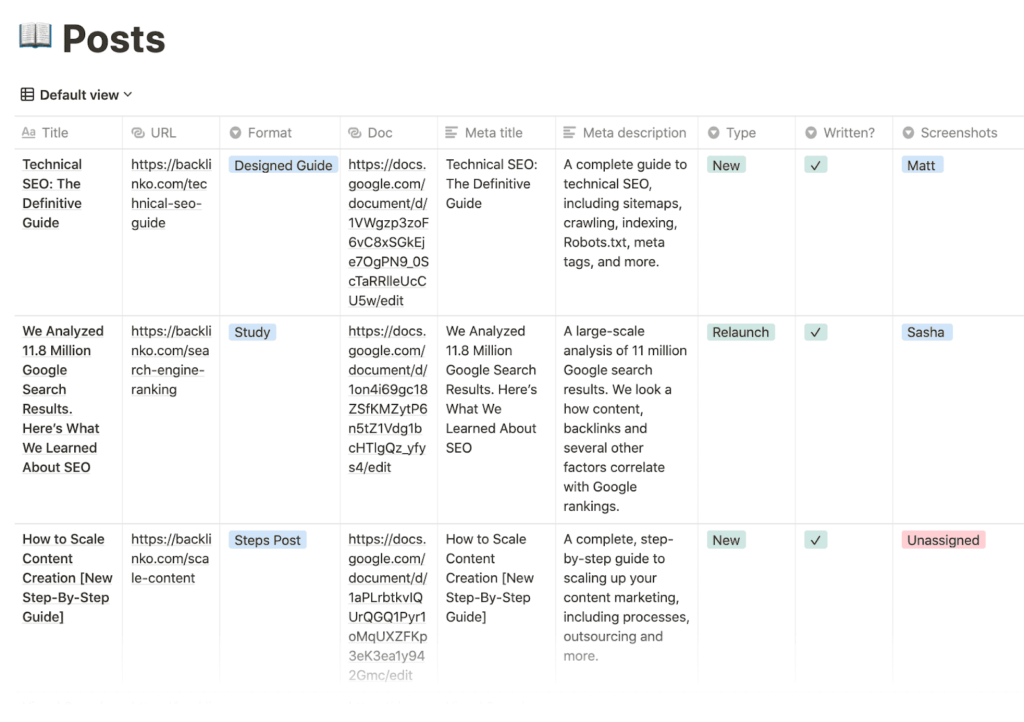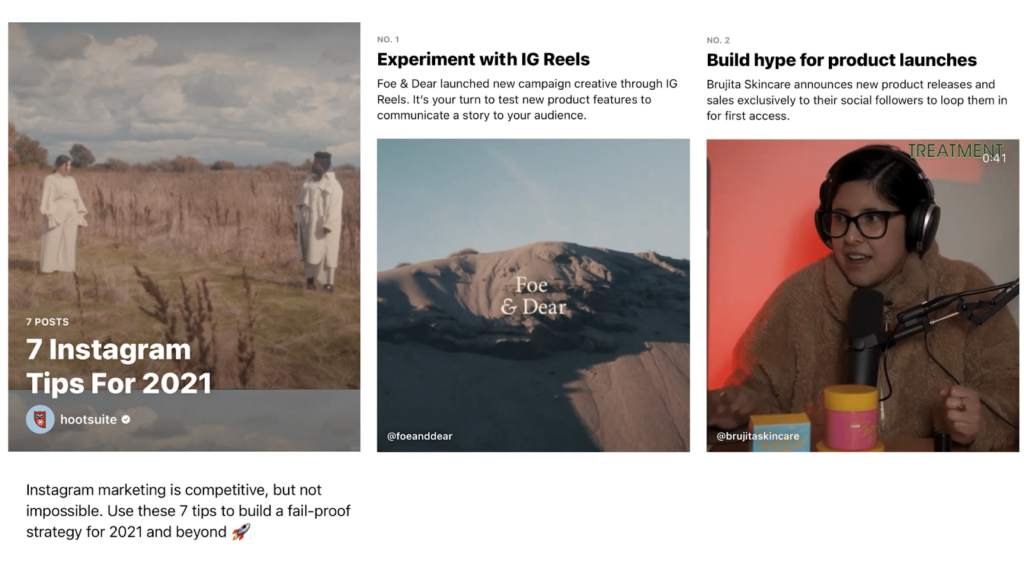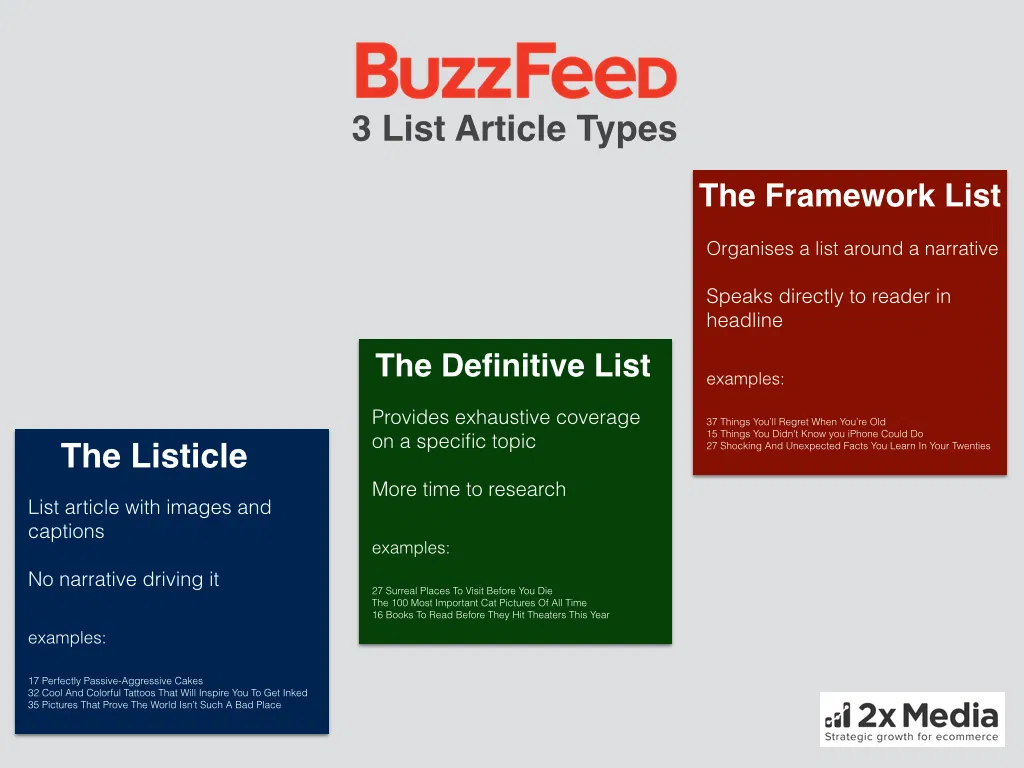
Table of Contents
- Why Should You Maintain a Content Calendar?
- Best Blog Ideas for Your Content Calendar
- Key Takeaways
- Conclusion
- FAQs
Whether blogging is your hobby or you maintain a dedicated blog for your business, you and your team must be on a constant lookout for the best blog ideas. Especially if you are investing your time, energy, and resources into content marketing, a content calendar scheduling brilliant topics that you will be posting about is a necessity. However, maintaining a business blog is no mean feat. Add to it the effort that goes into brainstorming new and constantly fresh blog ideas.
A content calendar is a shareable layout that marketing groups can use to plan and plot all their content marketing activities. It ensures that your content-related tasks are accomplished on time. It also eases the process of collaboration for your and your team. Think of a content calendar as a big picture of all your upcoming tasks related to content: writing, editing, and publishing. Isn’t it so much better to have your entire content marketing strategy in front of you, all arranged in one place?

Why Should You Maintain a Content Calendar?
If you think a list would also accomplish the same task, you are most certainly wrong. While a list allows you to jot down all ideas in a place, a content calendar is a more complex and organized system of managing your work. It tells you what will be posted, who will post it, and when. Some of the benefits of having a content calendar are as follows.
- Using a content calendar helps you streamline your content marketing activities. Once you have entered your blog post ideas in the calendar and the corresponding publishing dates, you can determine if there are any content gaps in your strategy.
- A content calendar allows you to better integrate your email and social media marketing strategies.
- It is an excellent way to organize freshly brewed ideas.
- Consistency is key in content marketing. Possibilities of irregularity can be eliminated when you use a content calendar to organize your ideas.
- Blogging is more than randomly posting whatever you like, whenever you would like to. Ideas that are not coherent and relevant will tire the reader over time, and the blog posts would not propel them to read more. A planned posting schedule helps you keep your audience engaged.
- It also saves you time and energy. It avoids unnecessary stress that arises from not having sufficient content planned beforehand and creating last-minute posts as a result.
- You can keep all your teams on the same page with a content calendar. It integrates their efforts and results in better marketing, content creation, and more.
Best Blog Ideas for Your Content Calendar
As a content creator, you must have run out of content ideas at one point or the other. Well, truth be told, all of us have and still do. While writer’s block is a serious deal, generating fresh ideas can be equally stressful. You have to keep many factors in mind while brainstorming ideas: they should be relevant, current, engaging, interesting, unique, and they add value at the same time. Not only this, but it is also crucial that your blog ideas achieve the desired monthly target of web visitors and readership engagement. When hit by a brainstorming block, all of us need a ray of inspiration. Here are 12 blog ideas for your blog calendar, for those troubled times.
1. Personal stories
Personal stories are an extension of your personality put out on your blog. Real personal stories are literally one of the best blog ideas you can use to connect with your readers. If someone has been ardently following and reading your blog for quite some time, they would surely love to know more about your personal experience. But make sure that what you share with your readers falls into their area of interest.
If you have accomplished something in your niche that they might be interested in learning, share it in the form of an inspirational personal story with them. Your personal stories can motivate them, inspire them, and bring you closer to them. If you have learned a lesson or you have some important takeaways from doing something unusual in your niche, it will make for an excellent blog topic idea. Raw personal stories could be in the form of aspirational posts, inspirational video episodes, “lessons learned” posts, or an open letter dedicated to a certain cause.
2. Explainer blogs
Another one on the list of blog post ideas is a blog that addresses the curiosity or intrigue of your readers. We all love to read the process behind so many things, whether it is the processing of a certain edible, manufacturing of shoes, or the evolution of a specific technology. These posts do not necessarily start with the word “why”. They could even start with other terms: “The science behind…”, “The Secret of the…”, and so on.
Posts that tell the audience the nitty-gritty of something or give them a peek into a concept are bound to attract readership. This is because they are imparting valuable information. The higher the curiosity, the better the engagement of the readers with your content. Intriguing blogs drive more traffic to your site. Such posts can be done in parts, in order to compel the readers to keep coming back for more.
3. Cornerstone posts
Cornerstone content is the most significant content of your website. It tends to naturally rank higher in the search engine results. Traditionally written in the form of web page content, cornerstone content can also be shaped into a blog post idea. One example of cornerstone blog ideas could be FAQs. They answer the frequently asked questions by your readers and work brilliantly as informational blog post ideas.
Cornerstone posts could also be written as explanatory or history posts. Posts that explain something in detail or in a unique and simplified manner, are known as explanatory posts. History posts share the background story or history behind something. This is a good blog content idea if your readers are interested in history tidbits and explanations of complex ideas, processes, and concepts pertaining to your niche. Guides also fall under cornerstone blog posts. They could be written keeping in mind the different levels of understanding of the readers. Guides can be segmented into three levels: beginner’s guide, advanced guide, and ultimate guide.

Cornerstone blogs can also be written in the form of how-to posts. Tutorials are loved by readers. Across different niches of blogging, tutorials are interesting to create and share. They make it easy for readers to achieve something by following a simplified set of instructions.
4. Round-up blogs
Round-up posts build a lot of engagement. They can focus on issues that resonate with a section of your audience; or it could be a trending topic that gives you an opportunity to educate your reader, supplemented with expert opinions on the topic. You can also seek inspiration for an interesting round-up post from your query emails and customer feedback.
Focus your round-up post on an issue that is niche-based and addresses a specific problem that your readers might want to read about. Use existing information to create engaging round-up posts. Unlike an interview, in a round-up post, you do not focus your post on the opinion of a single person; instead, you draw insights from the opinions of different industry experts. Out of all the blog ideas, round-up posts allow you maximum creative freedom as a content creator. Some steps that can help you craft effective round-up posts are as follows:
- Research ideas and topics that can be written as round-up posts.
- Shortlist the topics that you are interested in writing about.
- Go through your connections/professional network/ circle of acquaintances. Find out if you already know any industry experts and reach out to them.
- Conduct online research to see if there are industry experts that might be easy to approach or send a query letter to.
- Prepare a list of all the people you would like to feature in your round-up post.
- Make a questionnaire form.
- Reach out to the experts with your post idea.
- Request them to fill out the questionnaire forms.
- Draft your blog post.
- Collect insights from the responses given by the experts.
- Include and highlight these insights in your post, and publish.
5. Problem-solving blogs
Your readers are not visiting your blog on a whim. They are doing so because they have a problem pertaining to your niche and they believe your blog can offer a solution, which could be via informative content, products, or services. If you have tapped into the exact problem of your audience, it can be turned into a killer blog content idea. Let’s take a look at how you can create compelling problem and solution blog posts.
- Be specific about the problem you will be addressing.
- Conduct a quick audience research if required.
- Do not try to crunch the solution of a wide problem into less than 1000 words.
- Understand the problem from your audience’s perspective.
- Offer them a solution that is easy to understand, practical, and requires minimum effort to implement.
- Ensure your instructions are clear. Readers should not be left guessing or feeling confused.
There are a lot of problem-solving posts that might exist on a particular topic. Make your post as specific as possible in terms of addressing a single problem and offering a unique yet easy solution for it. Your post should offer maximum value to your readers.
6. Case studies
If you are looking for the best blog ideas, you cannot leave case studies behind. Case studies offer social proof. Whether you are a blogger or a business owner, case studies are important, as they lend credibility to your voice. A lot of customers trust case studies. If you create a blog that either focuses on a single case study or combines insights from across a number of case studies, it will elevate your brand’s reputation. It will also help your audience understand your area of expertise better. Case studies should be real and genuine. They should highlight the important challenges and the solutions that were delivered. Audio and video testimonials are more effective than a customer simply vouching for your brand via text.
7. Mixed media posts
While blogs are typically known for their written content, blogging, these days, is no more limited to the written word. With time, it has moved past being just readable. Blogs are increasingly entertaining, interactive, and engaging now. Mixed media posts offer the audience an eclectic mix of media wrapped in the form of a blog, with which they can interact. Mix media posts can include infographics, comics, quizzes, and even vlogs. You can also embed videos and social media posts in your blog posts.
Comics explain your point in a much simpler manner to your audience. Quizzes have the potential of being viral content pieces. Nowadays, memes, GIFs, and audio pieces are also included in the media mix to make it interesting for your audience. Mixed media blog posts get more attention, generate more traffic to your site, and have a higher share rate.
8. Listicles
Also known as list posts, listicles are attention-grabbing pieces of content. They are one of the most popular blogging formats. Listicles are high-performing and informative. They are an excellent idea, as they help the audience easily navigate the text and find what is most relevant for them. They could be hacks, step-by-step guides, to-do posts, helpful tips, strategies, or even a list of items or suggestions. With the use of numbers, bullets, and arrows, you can modify a pre-existing piece of content into an interesting listicle.

Listicles have become popular among bloggers as they rank higher in search engine results. One of the most used formats of lists is the basic list, which is usually written in less than 1500 words. An expanded list not only outlines, but also attempts to briefly explain each point with examples. It is usually over 1500 words. A methods list focuses on listing all possible methods to achieve a particular goal or get a specific task done. Checklists are common and are used by all of us in our daily lives. A tools list culls out the tools required to get something done, ranking and comparing them as well. Glossary posts are also an important blog topic idea. They are a great way of helping beginners in your niche. They serve as guides to readers who might be interested in your niche but are not aware of technical jargon.
9. Promotional blogs
Promotional blogs are used by companies to address a specific segment of their audience. Service or product promotion blogs are low on social shares but they are specifically targeted at getting conversions and attracting new customers. You do not have to dig deeper into the details and benefits of your product or services in a promotional blog post. Your task is to address the pain points of your consumer and tell them how your product solves their issue effectively. If you can add in reviews of existing customers and their feedback on your product or service, it would enhance the appeal of your promotional blog post. Include a few statistics if possible. Data-backed promotional posts are more effective than simply praising your own product or service. A promotional blog should tell the audience the following things.
- What makes your product or service unique from similar options available in the market?
- How well do you understand their pain points?
- How will your product solve their problem?
10. Data and science posts
If you are looking for the best blog ideas to gain the trust of your audience, data and science posts are what you should create. For specific niches, posts that involve statistics, numbers, figures, and data in measurable forms make for read-worthy blog posts. This includes posts that make a claim and back it with scientific research, reports, or studies. Similarly, data-backed posts are built on the pillars of data that has been collected, quantified, or measured by a reputable group or organization.
You can also collect your own data or conduct research yourself. Data-based blogs usually take up a lot of time and require immense research, but they sure are worth the effort. You can even write posts that analyze a company or a process and then carry a report on it. Data posts are dedicated to data analysis across companies or brands. Lastly, posts based on round-ups of the top statistics can work well too.
11. Fear-mongering posts
Blog content ideas that work effectively include posts that elicit fear. This does not necessarily mean that you have to scare off your audience. You have to simply tap into their fears and generate content that they will respond to immediately. The element of immediacy is associated with fear-mongering posts. They compel the audience to read more than just the headline and introductory text. Fear-mongering posts could be in the form of the following ideas.

- A warning post that alerts your reader to a grave event or makes them aware of something they didn’t know about. However, do not leave your audience warned and alarmed. Provide them with the information required to deal with the warning situation.
- Myth busters are another way of writing fear-mongering blog posts. Debunking a popular myth always gets the audience excited and ready to hear more. Make sure the myth is related to your niche and is about something the audience might also be interested in. Back your claim on why it’s a myth.
- Mistakes posts are a fun take on fear-eliciting content. Sharing the common mistakes that people commit in your niche establishes your voice as an expert, and also adds credibility to your work.
- Hardly anyone can resist clicking on “What you are doing wrong” posts. You could talk about a thing or practice that a lot of people have the wrong information about. Tell them how it could be done in the right way.
12. Challenge posts
No one can resist an interesting challenge. 2020 and 2021 witnessed a number of 30-day social media challenge lists on Instagram. Challenge posts are an unconventional blog format, and owing to how unique they are, they tend to perform well as blog ideas. There are three broad categories of challenge blog posts.
- Reasoning posts share why you or your business did something controversial and what happened next.
- Challenge reports share the results of a challenge accepted by you as a blogger or an industry expert. A lot of bloggers share their challenge reports these days.
- You can also write a challenge post with an added account of what inspired you to do something. An example: “here’s what happened” posts.
Key Takeaways
- A content calendar is a shareable layout that marketing groups can use to plan and plot all their content marketing activities. It ensures that your content-related tasks are accomplished on time.
- Your overall marketing strategy improves with the use of a content calendar.
- Consistency is essential in content marketing.
- Share your accomplishments with your audience in the form of personal story blogs.
- Cornerstone content tends to naturally rank higher in search engine results and is traditionally written in the form of page content. Cornerstone content includes guides, tutorials, history posts, and explanatory posts.
- You can seek inspiration for an interesting round-up post from your query emails and customer feedback.
- If you have tapped into the exact problem of your audience, you can turn it into an excellent blog content idea. Your problem-solving post should offer maximum value to your readers.
- Create a blog that either focuses on a single case study or combines insights from a number of case studies.
- Listicles are high-performing and extremely informative. They are a popular blogging format.

Conclusion
Using the above-mentioned blog ideas and crisp content, you can create high-quality and effective blog posts that will not only drive traffic to your website but also help you connect with your audience. With the wide variety of options available under each of these 12 best blog ideas, you will not run out of blog post topics for a really long time.
FAQs
A few in-demand blogging niches currently are food, lifestyle, personal finance, fashion, and business marketing.
In order to create a content calendar for your blog, start by downloading a template for a content calendar. Conduct your keyword research and brainstorm some ideas that would be engaging for your audience. Schedule your topics for the month in your content calendar. Now stick to the schedule that you have created.
A few interesting topics to blog about in 2022 include how-to guides, behind-the-scenes posts, prediction blogs, interview posts, and problem-solution posts.
A content calendar is made up of upcoming blog pieces, status updates, planned promotional activities, partnerships, activities assigned to each team member, and updates to existing content.
A content calendar keeps stakeholders organized and accountable for their marketing responsibilities in the future.
Latest Blogs
Explore how Google’s 2025 AI search updates triggered ranking chaos. Learn actionable strategies to adapt your SEO for AI Overviews, zero-click searches, and SERP volatility. Stay ahead now.
Learn how to rank on AI search engines like ChatGPT, Perplexity, and Gemini by optimizing your content for authority, structure, and relevance. Stay ahead in AI-driven search with this strategic guide.
Explore the best healthcare SEO services for your medical practice. Improve online visibility and effectively reach more patients in need of your services.
Get your hands on the latest news!
Similar Posts

Content Analytics
8 mins read
Google I/O 2025: AI Search Shake-Up & Ranking Volatility

Artificial Intelligence
5 mins read
Top AI Blog Writing Tools for Website Monetization

Blogging
10 mins read